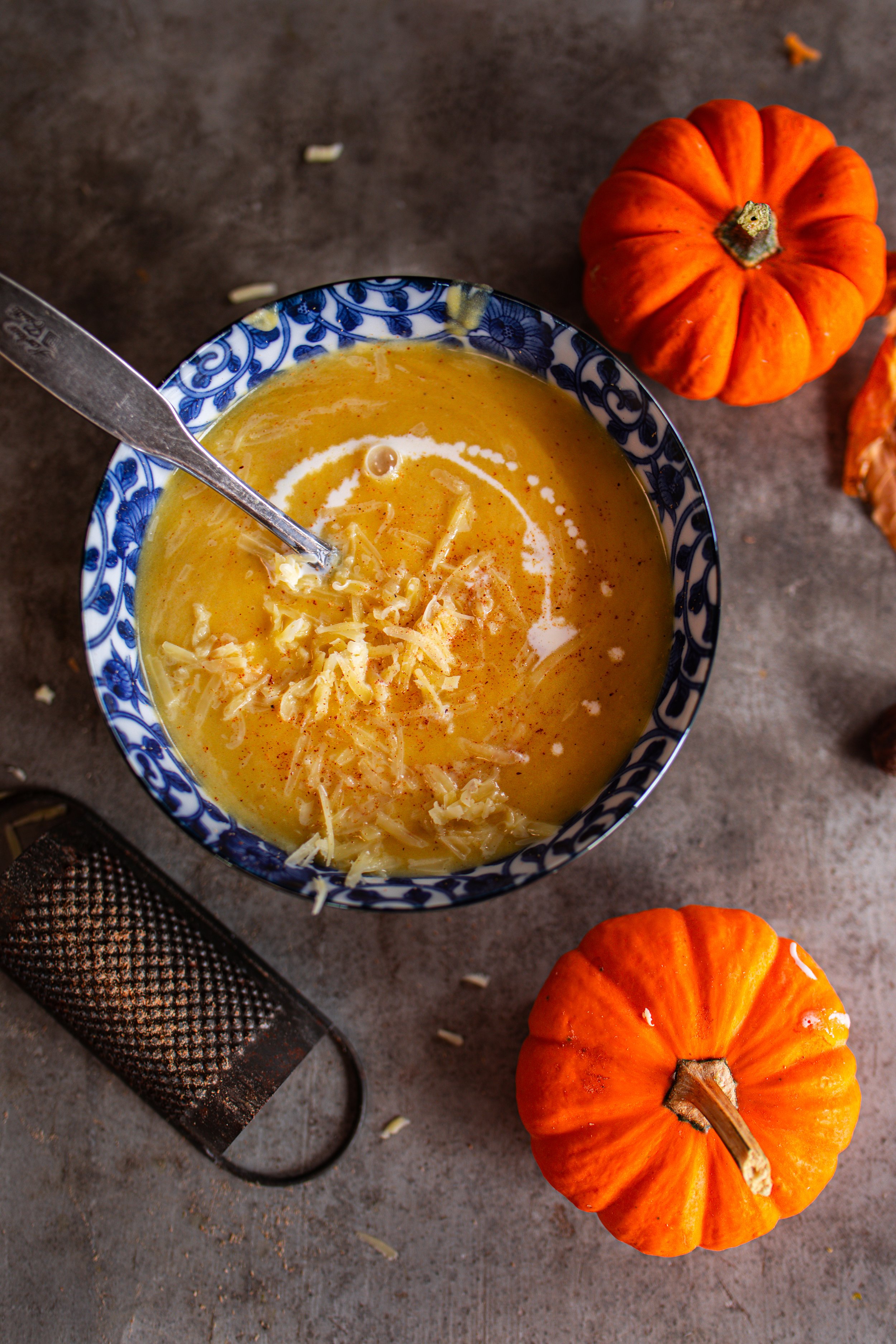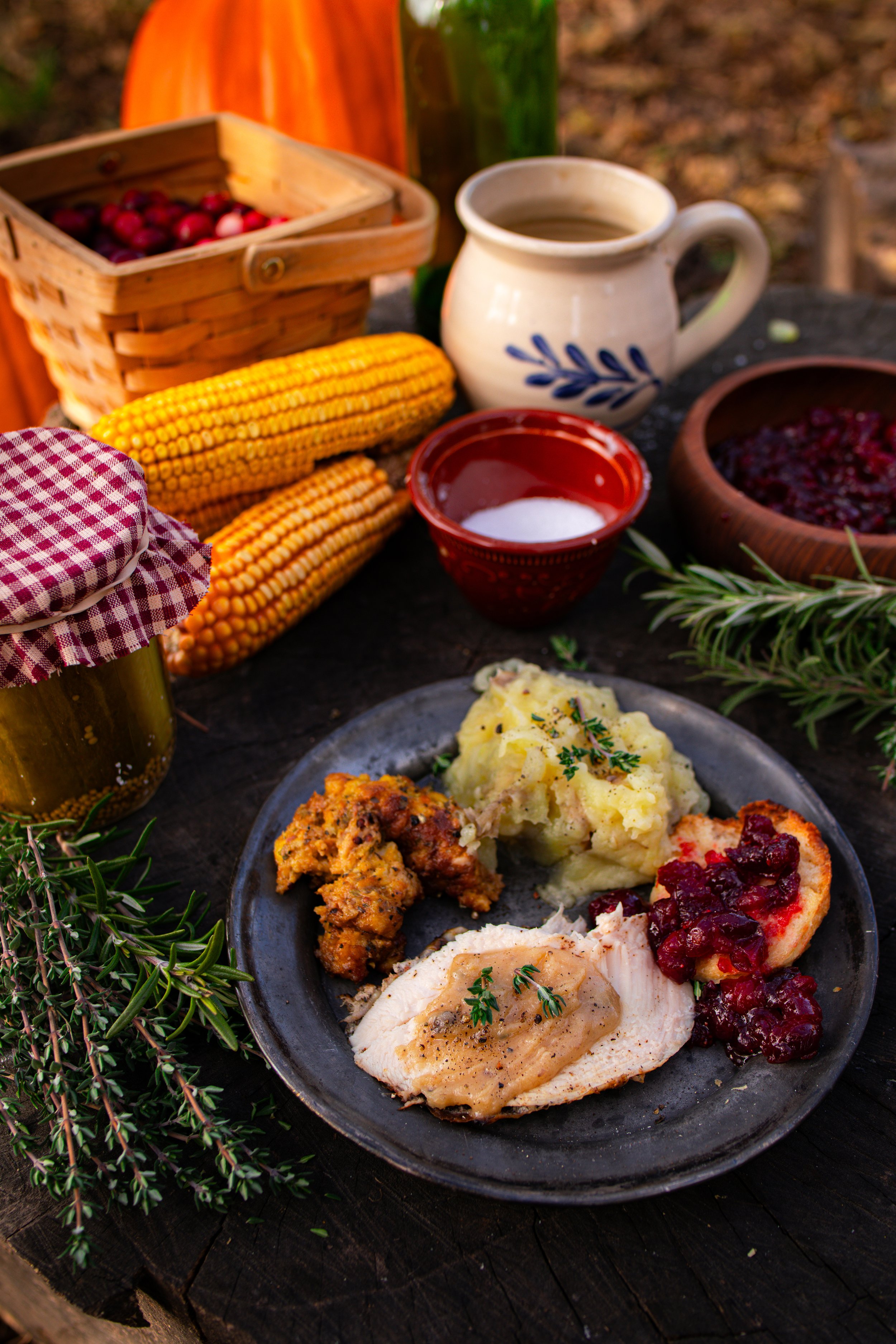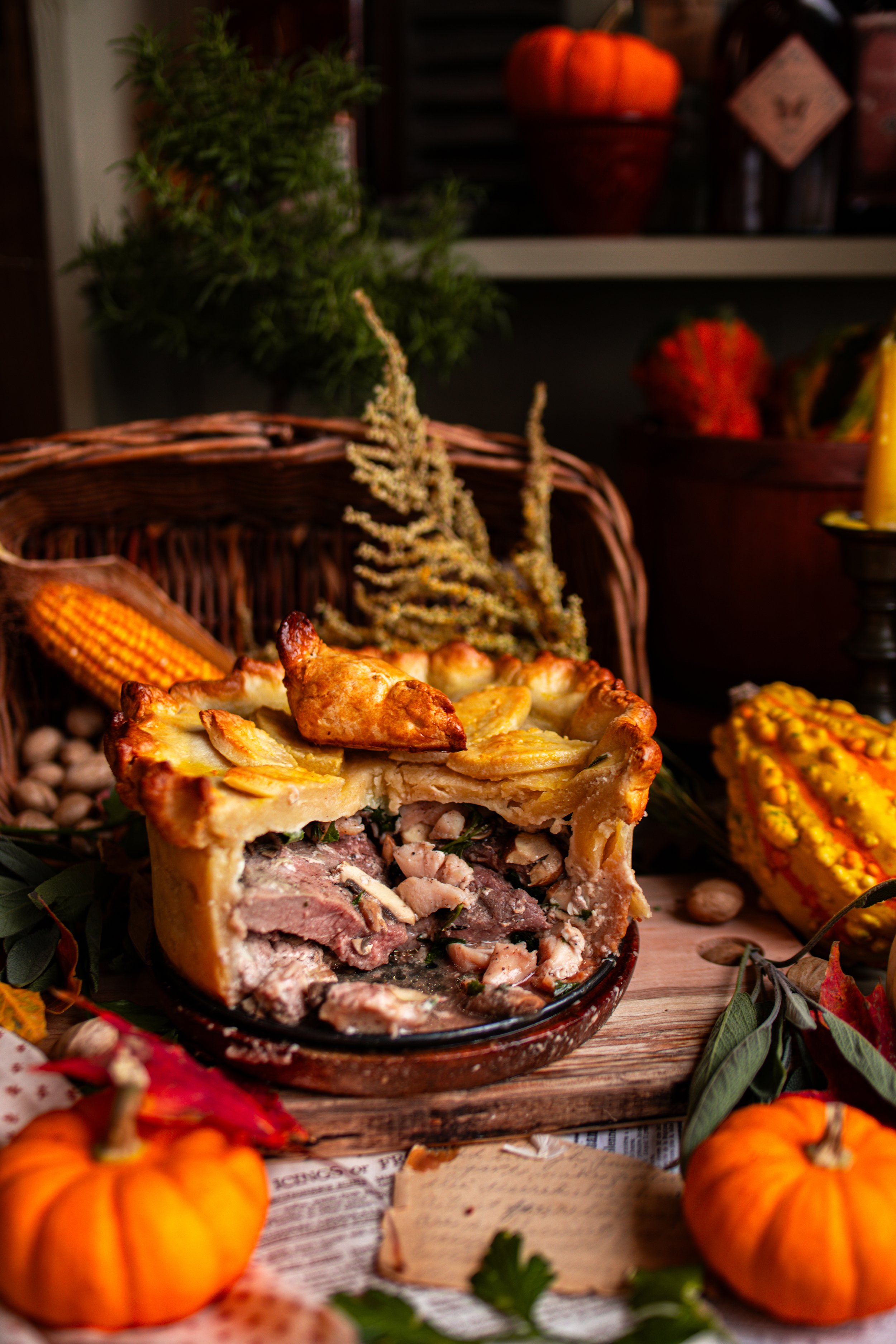Sage Spiced Meatloaf: 19th Century Inspired Recipe
This post may contain affiliate links, please see our privacy policy for more information.
Let’s step back in time together to savor the flavors of history in this autumn season with Sage Spiced Meatloaf. This recipe is inspired by my research of 19th century German sausage and early meatloaf mentions in historical cookbooks. Each of these recipes is American, and I found that this meal is truly an American comfort food.
In this post, I share some vintage recipes, heritage cooking ideas, and of course the final recipe which is a meatloaf spiced with nutmeg, cloves, garlic, and sage. There is also a delicious Brown Mushroom Gravy to accompany the meal!
meatloaf in history:
I began my research by hunting through old cookbooks and taking to the internet to find the source of the first meatloaf or meatloaf-like recipes. While there is not mention of the name “meatloaf” until the end of the 19th century, there are various recipes that give off a similar style. These recipes are simply sausages that are not packed into casings.
These recipes tend to be German or be influenced by German cooking. For instance, one of the earliest European versions of this meal can be found in Germany under the name of Falscher Hase (fake hare), which is a traditional dish made with ground meat, breadcrumbs, and seasonings. The meat was shaped to the look like a rabbit or hare.
Early colonial American recipes begin to grasp onto this concept and there are some mentioned in books as early as Hannah Glasse’s The Art of Cookery Made Plain and Easy (1805), Mary Randolph’s The Virginia Housewife (1842), and E.F. Haskell’s Housekeeper’s Encyclopedia (1861).
Here is a recipe from The Art of Cookery Made Plain and Easy (1805):
Sausages after the German Way: “Take the crumb of a threepenny loaf, one pound of suet, half a lamb’s lights, a handful of parsley, some thyme, marjory, and onion; mince all very small, then season it with salt and pepper. Stuffed in a sheep’s gut and fried in oil or suet.”
the first meatloaf recipe:
In my research to discovering where the concept of meatloaf as a meal began, I discovered that the first mention of meatloaf in an American cookbook did not happen until nearly the end of the 19th century. It is mentioned in Fannie Farmer’s famous cookbook, The Boston Cooking School Cookbook first published in 1896. I happen to have a reprint copy of that version, and it contains the recipe for a Veal Loaf, which is quite similar to our modern versions of meatloaf.
Veal Loaf II:
“Wipe three pounds lean veal, and remove skin and membrane. Chop finely or force through a meat chopper, then add two slices fat salt pork cut one-fourth inch thick (also finely chopped), six common crackers (rolled), one-fourth cup melted butter, and one egg slightly beaten. Season highly with salt, pepper, and sage. Pack in a small bread pan, smooth evenly on top, and bake slowly three hours. Cool before turning from pan. Cut in thin slices for serving.”
This sounds a lot like the meatloafs I have made with the addition of crushed crackers, or breadcrumbs, added fat, and egg.
the method:
To create this recipe, I wanted to pull some ideas from these other German-style sausage and meatloaves to create a flavor palette that reflected the time period. I love creating recipes that are inspired by the Victorian Era!
To recreate this historical meatloaf recipe, I combined the flavor mentioned in some of the recipes including sage, marjoram, garlic, nutmeg, cloves, and white wine vinegar. I did choose to use breadcrumbs because it was what I had on hand, but you could certainly substitute in cracker crumbs instead. A plain cracker would be best, something like a saltine or a Ritz cracker if you do not make your own. You can try my Rosemary and Sea Salt Sourdough Crackers or Buttery Round Crackers.
All of the ingredients are combined together, using your hands or a wooden spoon, and packed tightly into a standard 9 x 5-inch (22 x 13-cm) loaf pan. Then, the meatloaf is baked at 350° F (177° C) for about an hour or until it reaches an internal temperature of 165° F (74° C). This recipe was traditionally served with a mushroom catsup, so I decided to create a simple brown mushroom gravy to accompany the loaf.
final thoughts:
This recipe turned out absolutely delicious! I did not really have any doubts that it would. I usually do not use butter as an additive for meatloaf favoring mayonnaise or cold, chopped lard instead. But the butter actually was quite nice! This old-fashioned flavored meatloaf is still moist and juicy. The classic comfort food is still just as delicious, and it has a beautiful depth with the sage and autumn spices.
I think that you will really enjoy this 19th-century inspired recipe!
xoxo Kayla
Sage Spiced Meatloaf & Brown Mushroom Gravy

Ingredients
- 1 lb (454 g) ground beef
- 1 lb (454 g) ground pork
- 1 medium yellow onion, finely chopped
- 3 cloves garlic, minced
- 3/4 cup to 1 cup (108 g) breadcrumbs or cracker crumbs
- 2 tbsp (30 ml) melted butter, slightly cooled
- 2 tbsp (30 ml) white wine vinegar
- 2 large eggs
- 2 tbsp (8 g) dried sage
- 1 tbsp (4 g) dried marjoram or oregano
- 2 tsp kosher salt
- 1 tsp ground black pepper
- 1/2 tsp cinnamon
- 1/4 tsp ground cloves
- 1/4 tsp ground nutmeg
- 3 tbsp (44 g) salted butter
- 1 cup (70 g) brown mushrooms, sliced
- 3 tbsp (24 g) all-purpose flour
- 2 tbsp (30 ml) Worcestershire sauce
- 1 1/2 cups (360 ml) half and half or milk
- Salt and pepper, to taste
- Fresh parsley, for garnish
Instructions
- Preheat the oven to 350° F (177° C). Grease a 9 x 5-inch (22 x 13-cm) loaf pan and set this aside.
- In a large bowl, combine the beef, pork, onion, garlic, breadcrumbs, butter, vinegar, eggs, sage, marjoram, salt, pepper, cinnamon, cloves, and nutmeg. Blend this together with your hands or a wooden spoon until all of the ingredients have been evenly spread throughout the meat. It should come together like a big ball of sausage. If it is crumbly, you may have too many breadcrumbs. This can be fixed with another egg or a bit more butter.
- Pack the meat into the greased loaf pan, making sure that aren't any air bubbles. Bake the meatloaf in the preheated oven for 50 to 60 minutes or until an instant read thermometer reads the internal temperature of the meatloaf at 165° F (74° C).
- Let the meatloaf rest, covered, for at least 15 to 20 minutes before slicing.
- While the meatloaf bakes in the oven, make the Brown Mushroom Gravy.
- In a medium saucepan, melt the butter. Add in the mushrooms and saute until they are softened and emitting their own juices, about 5 minutes. Sprinkle the mushrooms with flour to create a roux, and stir until they have absorbed the flour and become a bit pasty, about 2 minutes.
- Add in the Worcestershire sauce and stir. Then, slowly pour in the half and half. The gravy will quickly begin to thicken over medium heat. Continue to add the liquid, stirring as you pour, until all of it has been added. When the gravy begins to boil, it should be thickened and finished. Remove the pan from heat and season the gravy to your liking.
- Serve the meatloaf warm with a helping of the gravy and some fresh parsley for garnish.
more posts you may enjoy!
Sources:
The Art of Cookery Made Plain and Easy (1805); Hannah Glasse
Housekeeper’s Encyclopedia (1861); E.F. Haskell
The Virginia Housewife (1842); Mary Randolph
The Boston Cooking School Cookbook (1896); Fannie Farmer











